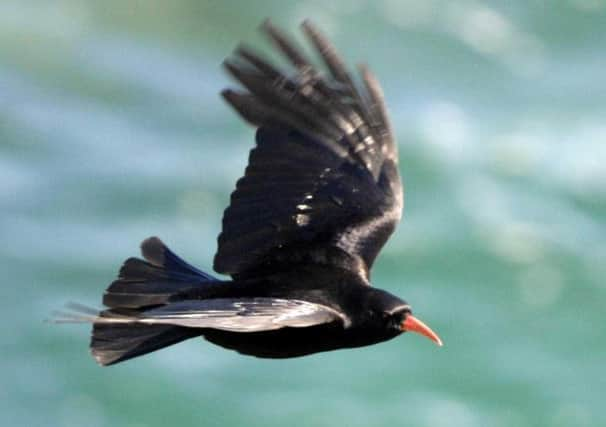Proper corvid control worth crowing about


So, Liquorice and Allsorts are scoping he cropped field outside my office window as a possible nesting site. This pair of oystercatchers spends most of the day stalking the ground, probing their orange-red beaks into the soil and occasionally taking sudden flight while emitting their distinct piping call. I don’t know if it is the same pair as last spring but studies have shown a strong mate and site loyalty in the species, with one pair occupying the same site for 20 years, so I’m confident Liquorice and Allsorts have returned to their summer residence.
Their neighbours are the resident crow, jackdaw and rook population. All seem to be co-existing happily at the moment, foraging across the same fields. In a few weeks’ time, however the nests of oystercatchers and many other birds of the open field, moor and hedgerow will contain eggs. Crows are excellent predators of nests leaving tell-tale signs of a neat hole in the egg with shell fragments attached inside and no white or yolk. And they are doing very well in our modern landscape. Carrion crow numbers have increased steadily across the UK since the 1960s with the British Trust for Ornithology (BTO) estimating 987,500 pairs in 2000.
Advertisement
Hide AdAdvertisement
Hide AdIn contrast BTO data also shows that since 1994 there has been a decline in oystercatchers in Scotland (29 per cent between 1995-2010) and the species is listed in the amber category of conservation importance. Other ground nesting birds such as curlew and lapwing are also less abundant. Some of these species are now restricted to upland areas where predators are controlled to benefit red grouse.
Reducing crow numbers is an important part of predator control on our moors. In the lowlands Game & Wildlife Conservation Trust (GWCT) research shows that corvid predation can reduce the numbers of successful lapwing nests. Where there’s enough breeding habitat and food supply we and other bodies believe reducing the number of crows during the breeding season will help conserve vulnerable bird species.
It is important then that crows can be trapped under an annual General Licence, issued by Scottish Natural Heritage. The next step is to rely on individuals to do this work and do it well. Fortunately, there is an incentive for landowners, farmers, gamekeepers and other people authorised to trap. Crows are controlled to reduce impacts on lamb and ewes and to help ground nesting game birds such as partridges or ducks breed better. This in turn benefits our species of concern. For example, crow control has been shown to increase thrush and blackbird nesting success.
It is vital that the use of corvid traps is justified by sound evidence and undertaken to the highest standards. By using the experience and knowledge of practitioners we can better inform and refine this licensed activity. Thus, GWCT along with Science & Advice for Scottish Agriculture (SASA) is conducting a study to investigate how corvid traps are used under the current General Licence system in Scotland.
The study got under way last year and we are now asking volunteers to keep simple records of their trap catches through this year and to allow SASA staff to remotely monitor trap activity. It is critical to the success of this work that as many trap users as possible participate in collecting trap records and other evidence.
This study has the support of a number of countryside organisations, including the British Association for Shooting and Conservation, the Scottish Association for Country Sports, the Scottish Gamekeepers Association, Scottish Land & Estates and the National Farmers Union of Scotland. All are joining us in encouraging participation from their members and supporters.
GWCT works to improve rational, achievable, proportionate, focused and humane predator control in suitable habitat where effective control can raise rarer species’ local abundance to levels higher than in the absence of predator control, resulting in improved conservation status.
More simply, we are motivated to ensure we don’t lose the management tools that can control predators effectively because without them numbers of species which define our countryside, including Liquorice and Allsorts, might well continue their decline.
• Katrina Candy is head of PR and education at the Game & Wildlife Conservation Trust (Scotland)
SEE ALSO